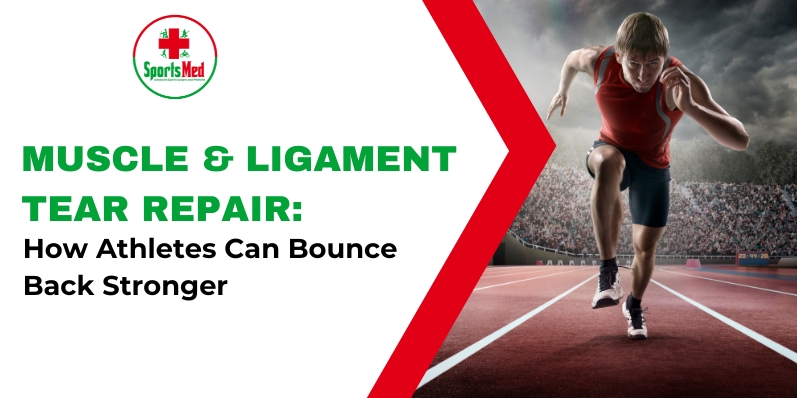
Muscle & Ligament Tear Repair: How Athletes Can Bounce Back Stronger
Muscle and ligament tears are some of the most common injuries that athletes face, and they can sideline you for weeks or even months. Whether it’s a strained hamstring, torn ACL, or injured rotator cuff, the road to recovery can feel long and frustrating. However, with the right treatment, rehab, and mindset, athletes can come back stronger than ever. Here’s a look at how muscle and ligament tears can be repaired, and how athletes can use this recovery period to return even more resilient.
Understanding Muscle and Ligament Tears
-
Muscle Tears: These occur when muscle fibers are overstretched or torn, typically from sudden, forceful movements or overuse. The severity can range from a mild strain to a full rupture.
-
Ligament Tears: Ligaments connect bones to other bones and provide joint stability. A ligament tear (such as an ACL tear) often results from a sudden, twisting motion or trauma. These injuries can be partial or complete tears, requiring more intensive treatment.
Steps to Recovery
1. Immediate Care (First 48 Hours)
-
Rest: Rest is essential to prevent further damage.
-
Ice: Applying ice helps reduce swelling and pain.
-
Compression & Elevation: Use compression bandages and elevate the injured area to minimize swelling.
2. Medical Assessment and Treatment
-
Diagnosis: A doctor will assess the severity of the tear, possibly using imaging (MRI, X-rays) to determine the extent of the injury.
-
Surgical Repair: For complete ligament tears, surgery may be required to reattach or reconstruct the torn ligament. Muscle tears may heal on their own but can benefit from medical treatments like PRP (Platelet-Rich Plasma) therapy to speed healing.
3. Rehabilitation (Week 2-12)
-
Physical Therapy: Physical therapy is crucial in rebuilding strength, flexibility, and stability. Exercises will focus on improving range of motion and strengthening the muscles and ligaments around the injury.
-
Strengthening: Gradually, you’ll add resistance exercises to rebuild muscle strength and reduce the risk of reinjury.
4. Sport-Specific Training (Month 3-6)
-
Gradual Progression: After regaining basic strength and flexibility, sport-specific drills such as running, cutting, or agility training will be introduced.
-
Controlled Movement: For ligament injuries like ACL tears, you’ll start with controlled, low-impact movements before progressing to more intense activities.
How Athletes Can Bounce Back Stronger
1. Focus on Strength and Conditioning
Injury recovery is the perfect opportunity to work on overall body strength and conditioning. Focus on improving the stability and strength of the muscles surrounding the injured area, which will better protect the joint or muscle in the future.
2. Work on Flexibility
Incorporate flexibility exercises to improve range of motion and prevent future strains. Stretching and mobility drills should be a daily part of your routine, particularly after an injury.
3. Preventative Measures
Post-recovery, athletes can benefit from additional strength and conditioning routines, such as core workouts, stability exercises, and balance training, to prevent reinjury.
4. Patience and Mindset
Returning to full fitness takes time. It's important to stay positive, patient, and dedicated to the rehab process. Rushing the recovery process can lead to setbacks or reinjury, so be sure to follow your rehab plan and only return to sport when you’re fully ready.
Conclusion
Recovering from a muscle or ligament tear is never easy, but with the right care, treatment, and rehabilitation, athletes can make a full recovery and come back stronger. By focusing on strength, flexibility, and injury prevention, athletes can not only bounce back but also reduce the risk of future injuries. Always remember, consistency is key, and recovery is a process, but with the right mindset, you can return to your sport with a stronger, healthier body than before.